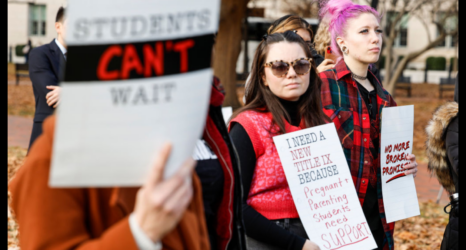Sexual harassment in the workplace can have serious financial and personal costs not only for workers, but for the businesses and brands that employ them.
Women’s mental and physical health, opportunities for job advancement and job security all suffer when sexual harassment occurs in the workplace. The costs to women who face harassment are major—and so are the impacts on businesses facing legal proceedings or settlements, employee absences, increased turnover and reduced productivity due to harassment.
The Institute for Women’s Policy Research (IWPR) recently released a report that emphasizes the cost of sexual harassment in the workplace and the way it directly and indirectly affects employers and employees. The briefing by IWPR shows the negative impacts of sexual assault and harassment on women’s livelihoods and earnings as well as the way harassment and assault negatively impact businesses.
The EEOC won $46.3 million in cases of sexual harassment charges in 2017, but even that number doesn’t represent the entire cost of legal fees paid by businesses to settle harassment claims overall, since the EEOC does not litigate all the cases it receives. Not all costs of sexual harassment are as easily monetized—but if calculated, those numbers could expose the astronomical negative impacts of patriarchy on the economy. (This summer, Senators Kirsten Gillibrand, Diane Feinstein, Patty Murray and Elizabeth Warren requested that the Bureau of Labor Statistics evaluate the true cost of sexual harassment in the workplace.)
The workers most vulnerable to sexual harassment are those with little economic agency and little solidarity. The “accommodation and food services” sector is notoriously plagued by issues of sexual harassment, in part because of substandard wages and working conditions which give female employees less control over their hours and working conditions, and women in male-dominated fields are more likely to experience frequent sexual harassment than their counterparts in more gender-balanced workplaces.
Tipped wage environments account for 14 percent of sexual harassment charges filed with the Equal Employment Opportunity Commission; according to IWPR, the number of harassment charges filed in the sector outnumbers the amount of total employment in the entire tipped wage economy. Meanwhile, three in ten women in the construction industry experience sexual harassment daily, as well we harassment based on sexual orientation, age or race; over one-quarter of women in active military duty reported experiences of sexual harassment or gender discrimination in the last year of serving; and women in STEM have reported more sexual harassment while on the job than their peers in other fields.
IWPR outlined various recommendations for businesses looking to adjust their policies and practices to combat harassment, including civility training, bystander training and comprehensive policies. If employers were more aware of the ways in which harassment was driving down their profit margins, they might be more receptive to putting them into place—especially since the #MeToo movement has showcased that a moral imperative alone may not carry enough weight in profit-driven industries to spark change.
“Knowing the true cost of sexual harassment would be significant,” legal analyst and Trigger Happy co-host Adrienne Lawrence told Ms. “Those numbers would be so incredibly impactful and real for larger social implications associated with businesses essentially squandering money by allowing sexual misconduct in the workplace.”





